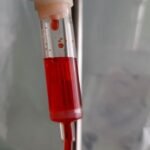Finding a lump in your breast can feel frightening.
It’s natural for your mind to jump straight to the worst-case scenario — cancer.
But here’s something important to know: not every lump is cancer.
In fact, many lumps are non-cancerous (benign) and completely treatable.
Let’s walk through the facts together, so you can understand the difference, stay calm, and know the right steps to take.
How Common Are Non-Cancerous Lumps?
Believe it or not, most breast lumps are benign breast lumps.
Studies show that about 80% of breast lumps turn out to be non-cancerous.
Some common types of benign lumps include:
-
Fibroadenomas:
Solid, smooth, rubbery lumps that easily move when touched. -
Cysts:
Fluid-filled sacs that feel soft or firm and may vary in size. -
Fibrocystic Changes:
A combination of lumpiness, tenderness, and swelling related to menstrual cycles. -
Lipomas:
Soft, fatty lumps that are slow-growing and harmless. -
Infections or Abscesses:
Swollen, painful lumps caused by infections in the breast tissue.
All of these can cause a lump in breast without meaning cancer.
How to Tell If a Lump Might Be Cancerous?
While it’s true most lumps are harmless, some features might suggest a need for closer examination.
Here are some cancerous lump signs to be aware of:
-
Hard, irregular-shaped lump
-
Lump that feels firmly attached deep inside
-
Lump that doesn’t move easily when pushed
-
Skin changes over the lump (redness, dimpling)
-
Nipple changes like discharge or inversion
-
Lump growing rapidly over time
-
Painless lump (yes, cancerous lumps are often painless)
Important:
These signs don’t confirm cancer. They only mean you should see a doctor for further testing.
When Should You Get a Breast Lump Checked?
Anytime you find a lump in breast, it’s smart to get it checked by a healthcare provider.
Here’s when you should definitely act:
-
New lump that wasn’t there before
-
Lump that changes in size or feel
-
Lump that stays even after your menstrual cycle
-
Associated symptoms like skin changes, nipple discharge, or pain
Remember, early diagnosis is key whether it’s cancerous or not.
What Happens During a Breast Lump Diagnosis?
If you find a lump, don’t panic — instead, focus on getting the right breast lump diagnosis.
Your doctor might recommend:
-
Physical Exam:
Feeling the lump and checking for other symptoms. -
Mammogram:
An X-ray of the breast that can show suspicious areas. -
Breast Ultrasound:
Especially useful for younger women to see if the lump is solid or fluid-filled. -
MRI (if needed):
A more detailed imaging if the situation is unclear. -
Breast Biopsy:
A small sample of tissue taken to confirm if the lump is benign or cancerous.
Biopsies sound scary, but they are a safe and essential step to remove doubt.
What If It’s a Benign Breast Lump?
Good news — if you’re diagnosed with a benign breast lump, treatment might not even be needed!
Many benign lumps simply:
-
Stay the same size
-
Disappear over time
-
Cause no problems
In some cases, doctors might remove the lump if it’s large, painful, or causing worry.
You’ll likely be asked to return for regular checkups to monitor the lump.
Does Having a Benign Lump Increase Cancer Risk?
Most benign breast conditions do not increase your future risk of breast cancer.
However, some rare types of benign changes (like atypical hyperplasia) slightly raise the risk.
Your doctor will discuss this with you if necessary and may suggest more regular screenings.
Again, early detection and consistent monitoring are the keys.
Final Thoughts: Stay Calm, Stay Informed
Finding a lump is alarming, but remember:
Not every lump is cancer.
Taking quick action by visiting your doctor, getting a proper breast lump diagnosis, and following up gives you control.
Whether it’s a harmless non-cancerous lump or something needing treatment, you are doing the right thing.
Your health journey is about knowledge, courage, and hope.
Trust your instincts, seek medical guidance early, and stay proactive.
You are not alone, and most importantly — you have options.



